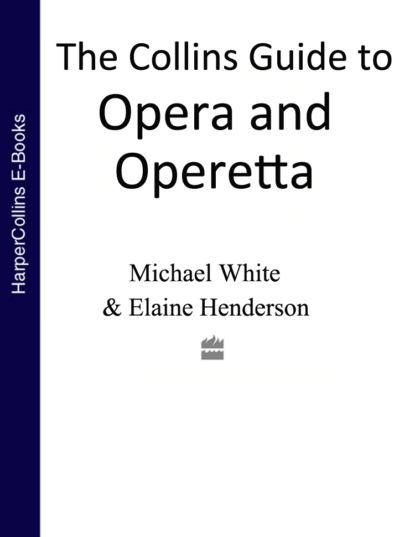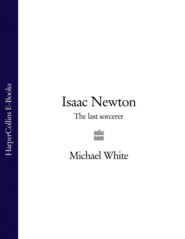По всем вопросам обращайтесь на: info@litportal.ru
(©) 2003-2024.
✖
The Collins Guide To Opera And Operetta
Автор
Год написания книги
2018
Настройки чтения
Размер шрифта
Высота строк
Поля
Mezzo-soprano
Abbé de Chazeuil
Tenor
Synopsis of the Plot
Setting: Paris; 1730
ACT I At the theatre, Adriana confides to Michonnet, who adores her, that she loves an officer in the Count of Saxony’s service. They are interrupted by the officer himself (actually the Count in disguise) who immediately declares his love for Adriana; before leaving for the performance, Adriana gives him some violets for his buttonhole. The Prince and the Abbé then enter, discussing a letter they have intercepted, addressed to Maurizio and arranging an assignation at the villa of the Prince’s mistress, Adriana’s actress rival, Duclos. The two men allow the letter to be delivered to Maurizio, who realises that the writer is not Duclos, but the Princess, a former lover. He decides to keep the appointment for political reasons. Adriana, meanwhile, is invited by the Prince to join an after-theatre party at the villa.
ACT II Maurizio and the Princess meet, but the Princess is upset to see the violets he is wearing and accuses him of having another lover; with great presence of mind he says they are a gift for her. At that moment they are surprised by the arrival of her husband and the Abbé, and the Princess hides in the next room. When Adriana arrives she recognises Maurizio as her ‘officer’ and they reaffirm their love. Maurizio asks Adriana to help the woman in the next room to escape. Later, in the dark, the two women discover that they are rivals for Maurizio’s love.
ACT III The Prince and Princess are holding a party. Among the guests is Adriana, whose voice the Princess recognises as that of her rival for Maurizio. When Maurizio himself comes in, the two rivals resort to charge and countercharge, ending with Adriana declaiming a passage from Racine’s Phèdre about lustful women while looking the Princess straight in the eye.
ACT IV Adriana is deeply depressed, believing that Maurizio no longer loves her. Her misery is compounded by the delivery of a box ‘from Maurizio’ containing the violets that she had given him. Sadly, Adriana kisses them and throws them on the fire. At that moment Maurizio himself comes in and asks her to marry him. Adriana is overjoyed. But suddenly she turns pale and faint. She accuses Maurizio of sending her poisoned flowers, which he denies, before dying in his arms. Michonnet, broken-hearted, knows that this is the work of the Princess, who has exacted the ultimate revenge.
Music and Background
Adriana Lecouvreur is generally said to be a fine opera for a fine soprano past her prime: in other words, the title role makes enough demands to be challenging but without too many top notes. As verismo writing goes, it is comparatively restrained and subtle.
Highlights
Adriana’s Act I ‘Io son l’umile ancella’ is sort of motto theme that recurs throughout the score. Her Act IV ‘Poveri fiori’ is the other show-stopper.
Recommended Recording
Joan Sutherland, Carlo Bergonzi, Welsh National Opera/Richard Bonynge. Decca 425 815-2. Sutherland in peak, grand-tragic form.
Domenico Cimarosa (#ulink_e8f300ff-f453-5f9d-b90b-1fe3ec079895)
(1749–1801)
Il Matrimonio Segreto (1792)
Most of his eighty stage works are forgotten now, but in his time, Cimarosa was probably the most prolific and successful opera composer in Europe, notwithstanding the fact that he was a contemporary of Mozart. After studies in Naples he moved to St Petersburg as court composer to Catherine the Great, but failed to please his patron. Moving on to Vienna, he took a similar position with Emperor Leopold II, and it was there that his most enduring work, Il Matrimonio Segreto, was premiered. Cimarosa had the added distinction of being sentenced to death for revolutionary tendencies. The sentence was reduced to imprisonment and exile, and he died in Venice, allegedly from poisoning.
IlMatrimonio Segreto (#ulink_98edd5c1-03b8-54d2-b1f5-36d62e315c3d)
(The Secret Marriage)
FORM: Opera in two acts; in Italian
COMPOSER: Domenico Cimarosa (1749–1801)
LIBRETTO: Giovanni Bertati; after Colman and Garrick’s play
FIRST PERFORMANCE: Vienna, 7 February 1792
Principal Characters
Geronimo, a rich merchant
Bass
Carolina, Geronimo’s daughter
Soprano
Elisetta, another daughter
Soprano
Fidalma, Geronimo’s widowed sister
Mezzo-soprano
Paolino, Geronimo’s clerk
Tenor
Count Robinson
Bass
Synopsis of the Plot
Setting: Bologna; 18th century
ACT I Paolino and Carolina have been secretly married and Carolina feels it is now time to break the news to her father, Geronimo, particularly as he has just heard that the aristocratic Count Robinson is on his way to propose to her sister, Elisetta. Geronimo is, of course, delighted to learn of the Count’s imminent arrival and Elisetta effortlessly assumes the airs of a countess, thus provoking a quarrel with her sister. Fidalma tries to make peace between the girls. All this talk of marriage has made her think of her own situation, and she reflects on her secret love for Paolino. Count Robinson arrives, but mistakes first Fidalma, then Carolina, for his future bride; when he is finally introduced to Elisetta, the least attractive of the three, he announces that he would rather have Carolina instead. Elisetta is furious and the act ends in pandemonium.
ACT II Geronimo is confronted by the Count who proposes that, instead of marrying Elisetta, he will take Carolina – for half the originally agreed dowry. Geronimo agrees and tells Paolino, who decides, reluctantly, to tell the truth to Fidalma in the hope that she will help them. Fidalma mistakes his reticent behaviour for the bashfulness of a lover and accepts the proposal of marriage she thinks he is about to make! Paolino is so shocked he faints and Fidalma is trying to revive him when Carolina comes upon them and demands an explanation. Meanwhile, Elisetta and Fidalma have hatched a plot to get Geronimo to send Carolina to a convent; Paolino and Carolina decide that they must run away. They are hiding in Carolina’s room when Elisetta bursts in, claiming Carolina is up to no good with the Count, who then emerges from his own room to ask what the fuss is about. At last Paolino and Carolina admit they are married and are forgiven; the Count agrees to marry Elisetta and harmony is restored.
Music and Background
A sparkling, romantic buffo comedy, Il Matrimonio Segreto straddles the worlds of Mozart (who died just two months before its first performance) and composers-to-come Rossini and Donizetti. The fast-moving patter songs certainly look foward to Italian bel canto writing, as does the needle-sharp clarity of the more lyrical numbers.
Highlights
Geronimo’s wide-ranging Act I aria ‘Udite tutti’ is a piece of evergreen operatic comedy; and the following female voice trio for Carolina, Elisetta and Fidalma, ‘Le faccio un inchino’, sustains the fun. Act II brings Paolino’s lyrical ‘Pria che spunti’ as the lovers resolve to run away.
Recommended Recording
Dietrich Fischer-Dieskau, Arleen Augér, Julia Varady, Julia Hamari, English Chamber Orchestra/Daniel Barenboim. Immaculately characterised performances, directed with great spirit.
Peter Maxwell Davies (#ulink_1a87a24b-86fa-5007-b5fb-34fec0d12ecb)
(1934–)









